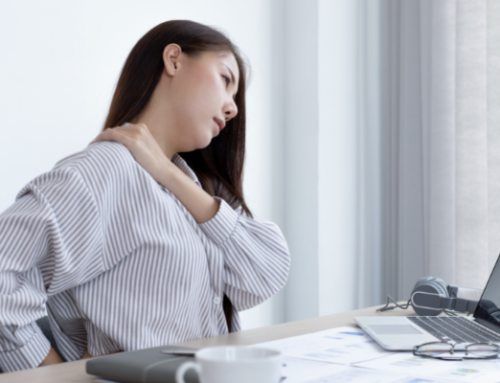- What is arthritis & why does it happen?
First of all, there are different types of arthritis. There is systemic arthritis (Rheumatoid, Psoriatic, etc.) and there is the more commonly known Osteoarthritis. Osteoarthritis is the focus of this blog and happens when joints break down and deform due to mechanical and gravitational stress. The most common locations of arthritis occur in the spine, fingers, hips, knees and toes. Joints are normally protected with a fluid-filled capsule, cartilage, and ligaments to keep it stable. When weight-bearing stress or overuse erodes the joint structure, arthritis occurs. This wear and tear damages the cartilage between joint surfaces, decreasing range of motion and causing inflammation & pain. You are more susceptible to arthritis as you age, if you are obese, have previous joint injury, or are female.
- Arthritis in Spine
The spine is designed to be the foundation of body movement & structure and provide protection for your nervous system. It is designed with curvatures to absorb gravitational and mechanical stress over time. Arthritis occurs as the spine becomes imbalanced (due to misalignments, poor posture, or injury). Therefore, it is logical that the most arthritis in the spine occurs at transitional junctions, where one curvature is transitioning to the next, because these are the areas with the most mechanical stress.
The most common areas in the spine are in the lumbar area at L4/L5 & L5/S1. The second most common is in the neck at C5/C6 and C4/C5. There are two main areas where spinal degeneration occurs. One is at the disc space where the vertebral end plates meet above and below vertebra. The second is in the facet joints, which are located on both sides from C2/C3 down to the sacrum. There are no facet joints at the Upper Cervical level in order to allow for freedom of movement for the head and neck.
- Implications of Arthritis
Arthritis technically means ‘inflammation of joint’, but inflammation is only part of what occurs in this condition. Most commonly, arthritis will present with joint pain and progressive stiffness over time. It can also present with swelling and redness.
Arthritis typically worsens over time unless something is done to bring biomechanical balance back to the body. As gravity continues to take it’s toll on the arthritic joints, these joints continue to deform and can often lead to musculoskeletal symptoms such as neck pain, back pain, tension headaches, hip pain, shoulder pain, etc. When severe, it can affect the surrounding nerves and lead to neurological symptoms such as sciatica, tingling/numbness in arms/hands/legs/feet, weakness in extremities, and many other conditions.
- How to treat arthritis
The key to treating arthritis is to restore proper balance to the body and proper motion in the joints. Body balance begins with aligning the spine. Upper Cervical Chiropractic seeks to align the spine by strategically aligning the head/neck complex (Cranio-Cervical Junction) in order to affect the body on a global level. The top two bones in the neck (C1 and C2, also known as Atlas and Axis) serve as a keystone for how the entire spine is aligned. If this area is rebalanced, there becomes a ‘trickle-down’ effect for the rest of the body coming back into balance on its’ own. Restoring biomechanical integrity and symmetry will lessen stress on the arthritic joints and distribute the gravitational stress more evenly throughout the body.







